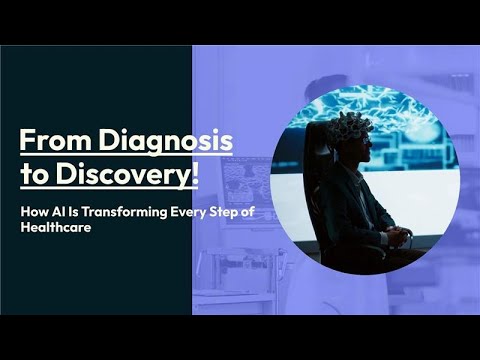
Pharmaceutical AI Analytics Market Report 2025: Unveiling Growth Drivers, Competitive Dynamics, and Future Opportunities in Data-Driven Drug Development
- Executive Summary & Market Overview
- Key Technology Trends in Pharmaceutical AI Analytics
- Competitive Landscape and Leading Players
- Market Growth Forecasts (2025–2030): CAGR, Revenue, and Volume Analysis
- Regional Market Analysis: North America, Europe, Asia-Pacific, and Rest of World
- Future Outlook: Emerging Applications and Investment Hotspots
- Challenges and Opportunities: Regulatory, Data Security, and Adoption Barriers
- Sources & References
Executive Summary & Market Overview
The pharmaceutical AI analytics market in 2025 is poised for robust growth, driven by the sector’s increasing reliance on artificial intelligence (AI) to accelerate drug discovery, optimize clinical trials, and enhance operational efficiency. Pharmaceutical AI analytics refers to the application of advanced machine learning algorithms, natural language processing, and data mining techniques to vast datasets generated across the drug development lifecycle. This technology enables pharmaceutical companies to extract actionable insights, predict outcomes, and make data-driven decisions, ultimately reducing time-to-market and R&D costs.
According to Mordor Intelligence, the global AI in pharmaceutical market is projected to reach over USD 5.2 billion by 2025, growing at a CAGR of approximately 29% from 2020. This surge is attributed to the exponential increase in healthcare data, the need for more efficient drug development processes, and the rising adoption of AI-powered analytics platforms by leading pharmaceutical companies. Major industry players such as Novartis, Pfizer, and Roche have made significant investments in AI partnerships and in-house analytics capabilities, underscoring the technology’s strategic importance.
Key market drivers in 2025 include the growing complexity of clinical trials, the demand for personalized medicine, and regulatory encouragement for digital transformation. AI analytics platforms are increasingly used to identify promising drug candidates, predict patient responses, and optimize trial design, thereby improving success rates and reducing attrition. Furthermore, the integration of real-world evidence and electronic health records into AI models is enabling more accurate forecasting and post-market surveillance.
Regionally, North America continues to dominate the pharmaceutical AI analytics market, supported by a mature healthcare infrastructure, strong R&D investment, and a vibrant ecosystem of AI startups. However, Asia-Pacific is emerging as a high-growth region, fueled by expanding pharmaceutical manufacturing, government initiatives, and increasing digitalization in countries such as China and India (Grand View Research).
In summary, 2025 marks a pivotal year for pharmaceutical AI analytics, with the technology becoming integral to competitive strategy and innovation. As regulatory frameworks evolve and data interoperability improves, the market is expected to witness further acceleration, reshaping the pharmaceutical landscape and setting new standards for efficiency and precision.
Key Technology Trends in Pharmaceutical AI Analytics
Pharmaceutical AI analytics is rapidly transforming drug discovery, development, and commercialization by leveraging advanced machine learning, deep learning, and data integration technologies. As the industry moves into 2025, several key technology trends are shaping the competitive landscape and operational capabilities of pharmaceutical companies.
- Generative AI for Drug Discovery: The adoption of generative AI models, such as large language models (LLMs) and generative adversarial networks (GANs), is accelerating the identification of novel drug candidates. These models can design new molecular structures with desired properties, significantly reducing the time and cost of early-stage drug discovery. Companies like Novartis and Pfizer are investing in generative AI platforms to expand their drug pipelines.
- Multi-Omics Data Integration: AI analytics platforms are increasingly capable of integrating genomics, proteomics, transcriptomics, and real-world data to provide a holistic view of disease mechanisms and patient responses. This trend is enabling more precise target identification and patient stratification, as seen in initiatives by Roche and GSK.
- AI-Driven Clinical Trial Optimization: Advanced analytics are being used to design adaptive clinical trials, predict patient recruitment rates, and monitor safety signals in real time. AI-powered platforms from companies like IQVIA are helping sponsors reduce trial timelines and improve success rates.
- Natural Language Processing (NLP) for Unstructured Data: NLP algorithms are extracting actionable insights from scientific literature, electronic health records, and regulatory documents. This capability is streamlining pharmacovigilance, regulatory submissions, and competitive intelligence, as demonstrated by IBM Watson Health.
- Federated Learning and Data Privacy: With increasing regulatory scrutiny, federated learning is emerging as a solution for collaborative AI model training without sharing sensitive patient data. This approach is being piloted by consortia such as the Innovative Medicines Initiative to enable cross-institutional research while maintaining compliance.
These technology trends are expected to drive further innovation and efficiency in pharmaceutical R&D, positioning AI analytics as a core enabler of next-generation therapies and personalized medicine in 2025 and beyond.
Competitive Landscape and Leading Players
The competitive landscape of the pharmaceutical AI analytics market in 2025 is characterized by rapid innovation, strategic partnerships, and a mix of established pharmaceutical companies and specialized technology firms. The sector is witnessing intensified competition as organizations seek to leverage artificial intelligence (AI) to accelerate drug discovery, optimize clinical trials, and enhance real-world evidence generation.
Leading players in this market include both global pharmaceutical giants and dedicated AI technology providers. Novartis and Pfizer have made significant investments in AI-driven analytics platforms, often collaborating with technology firms to integrate advanced machine learning into their R&D pipelines. For instance, Novartis has partnered with Microsoft to develop AI solutions for drug development and personalized medicine.
Specialized AI companies such as Insilico Medicine, BenevolentAI, and Exscientia are at the forefront of algorithm-driven drug discovery. These firms have demonstrated the ability to identify novel drug candidates and optimize lead compounds at unprecedented speeds, often outpacing traditional methods. Their platforms are increasingly being licensed or acquired by larger pharmaceutical companies seeking to bolster their AI capabilities.
The market is also shaped by major technology providers like Google Cloud and Amazon Web Services, which offer scalable infrastructure and AI toolkits tailored for pharmaceutical analytics. These cloud-based solutions enable pharmaceutical companies to manage and analyze vast datasets, supporting everything from genomics to clinical trial data management.
According to a 2024 report by Frost & Sullivan, the competitive intensity is expected to increase as more startups enter the space, often focusing on niche applications such as AI-powered biomarker discovery or patient stratification. Strategic alliances, mergers, and acquisitions are common, as established players seek to acquire innovative technologies and talent.
- Novartis and Microsoft: AI for drug development
- Pfizer: Internal AI analytics and external collaborations
- Insilico Medicine, BenevolentAI, Exscientia: AI-first drug discovery platforms
- Google Cloud, AWS: Infrastructure and analytics services for pharma
Overall, the pharmaceutical AI analytics market in 2025 is defined by a dynamic interplay between pharmaceutical leaders, AI specialists, and technology infrastructure providers, all vying for a competitive edge in accelerating innovation and improving patient outcomes.
Market Growth Forecasts (2025–2030): CAGR, Revenue, and Volume Analysis
The pharmaceutical AI analytics market is poised for robust expansion between 2025 and 2030, driven by increasing adoption of artificial intelligence (AI) across drug discovery, clinical trials, and commercial operations. According to projections by Grand View Research, the global AI in pharmaceutical market is expected to register a compound annual growth rate (CAGR) of approximately 29% during this period. This surge is attributed to the growing need for data-driven decision-making, rising R&D expenditures, and the proliferation of big data in healthcare.
Revenue forecasts indicate that the market, valued at around USD 2.5 billion in 2024, could surpass USD 10 billion by 2030, reflecting accelerated investments by both established pharmaceutical companies and emerging biotech firms. MarketsandMarkets projects that North America will maintain its dominance, accounting for the largest share of global revenues, while Asia-Pacific is expected to witness the fastest growth due to increasing digitalization and government initiatives supporting AI integration in healthcare.
Volume analysis reveals a significant uptick in the deployment of AI-powered analytics platforms, with the number of AI-driven projects in drug discovery and clinical development expected to double by 2030. The adoption of AI analytics tools for real-world evidence generation, patient stratification, and predictive modeling is anticipated to grow at a CAGR exceeding 30%, as reported by Fortune Business Insights. This growth is further fueled by strategic collaborations between pharmaceutical companies and AI technology providers, as well as increasing regulatory acceptance of AI-generated insights in clinical and regulatory submissions.
- CAGR (2025–2030): ~29% globally
- Revenue (2030 forecast): USD 10+ billion
- Volume: Doubling of AI-powered analytics deployments in pharma R&D and operations
In summary, the pharmaceutical AI analytics market is set for exponential growth through 2030, underpinned by technological advancements, expanding application areas, and a favorable regulatory environment. Companies investing in scalable AI analytics solutions are likely to gain a competitive edge as the industry transitions toward more data-centric and efficient drug development paradigms.
Regional Market Analysis: North America, Europe, Asia-Pacific, and Rest of World
The global pharmaceutical AI analytics market is experiencing robust growth, with regional dynamics shaped by varying levels of technological adoption, regulatory environments, and investment in healthcare innovation. In 2025, North America, Europe, Asia-Pacific, and the Rest of the World (RoW) each present distinct opportunities and challenges for stakeholders in this sector.
- North America: North America, led by the United States, remains the largest and most mature market for pharmaceutical AI analytics. The region benefits from a strong ecosystem of AI startups, established pharmaceutical companies, and significant R&D investment. The presence of regulatory frameworks that encourage digital health innovation, such as the FDA’s Digital Health Innovation Action Plan, further accelerates adoption. According to Grand View Research, North America accounted for over 40% of the global market share in 2024, driven by early adoption of AI in drug discovery, clinical trials, and real-world evidence analytics.
- Europe: Europe is characterized by a collaborative approach, with cross-border research initiatives and strong public-private partnerships. The European Medicines Agency (EMA) has issued guidance on AI in medicine development, fostering a supportive regulatory environment. Countries like the UK, Germany, and Switzerland are leading in AI-driven pharmaceutical research, with the region projected to see a CAGR of over 25% through 2025 (Fortune Business Insights). Data privacy regulations such as GDPR, however, pose unique challenges for data integration and analytics.
- Asia-Pacific: The Asia-Pacific region is emerging as a high-growth market, propelled by increasing healthcare digitization, government initiatives, and a burgeoning biotech sector. China, Japan, and South Korea are investing heavily in AI infrastructure and talent. According to Mordor Intelligence, Asia-Pacific is expected to register the fastest growth rate globally, with pharmaceutical companies leveraging AI for cost-effective drug development and personalized medicine.
- Rest of World (RoW): In regions such as Latin America, the Middle East, and Africa, adoption of pharmaceutical AI analytics is nascent but growing. Market expansion is supported by increasing investments in healthcare IT and international collaborations. However, challenges such as limited digital infrastructure and regulatory uncertainty persist, potentially slowing the pace of adoption compared to other regions (Data Bridge Market Research).
Overall, while North America and Europe lead in market maturity and regulatory clarity, Asia-Pacific is poised for rapid expansion, and RoW markets are gradually catching up, driven by global partnerships and digital transformation efforts.
Future Outlook: Emerging Applications and Investment Hotspots
The future outlook for pharmaceutical AI analytics in 2025 is marked by rapid expansion into emerging applications and the identification of new investment hotspots. As the pharmaceutical industry continues to embrace digital transformation, AI-driven analytics are expected to play a pivotal role in reshaping drug discovery, clinical development, and commercial operations.
One of the most promising emerging applications is the integration of AI analytics in precision medicine. By leveraging vast datasets from genomics, proteomics, and real-world evidence, AI platforms are enabling the development of highly targeted therapies and personalized treatment regimens. Companies such as Novartis and Roche are investing heavily in AI-powered platforms to accelerate biomarker discovery and optimize patient stratification for clinical trials.
Another key area is the use of AI analytics in drug repurposing and combination therapy identification. Advanced machine learning models are being deployed to analyze existing drug libraries and uncover novel therapeutic uses, significantly reducing time-to-market and R&D costs. Insilico Medicine and BenevolentAI are at the forefront of this trend, attracting substantial venture capital and strategic partnerships.
Clinical trial optimization remains a critical investment hotspot. AI analytics are being used to enhance patient recruitment, predict trial outcomes, and monitor safety signals in real time. According to McKinsey & Company, AI-driven trial design and execution could reduce clinical development timelines by up to 30%, making this a focal point for both pharmaceutical companies and technology providers.
Geographically, North America and Europe continue to lead in AI analytics adoption, but significant growth is anticipated in Asia-Pacific, particularly in China and India, where government initiatives and a burgeoning biotech sector are fueling investment. Grand View Research projects the global pharmaceutical AI market to reach $9.24 billion by 2025, with a compound annual growth rate (CAGR) exceeding 30%.
In summary, the future of pharmaceutical AI analytics in 2025 is characterized by expanding applications in precision medicine, drug repurposing, and clinical trial optimization, with robust investment activity in both established and emerging markets. Strategic collaborations between pharma, tech firms, and research institutions are expected to further accelerate innovation and market growth.
Challenges and Opportunities: Regulatory, Data Security, and Adoption Barriers
The integration of AI analytics in the pharmaceutical sector is accelerating, yet it faces a complex landscape of regulatory, data security, and adoption challenges, alongside significant opportunities. As of 2025, regulatory frameworks remain a critical hurdle. The rapid evolution of AI technologies often outpaces the ability of regulatory bodies to establish clear, harmonized guidelines. For instance, the U.S. Food and Drug Administration (FDA) and the European Medicines Agency (EMA) are actively developing frameworks for AI-driven drug development and clinical trials, but inconsistencies and evolving requirements can delay product approvals and market entry. The lack of standardized validation protocols for AI models further complicates compliance, especially in multinational trials.
Data security and privacy are paramount concerns, given the sensitive nature of patient and clinical trial data. The implementation of AI analytics requires access to vast datasets, often involving cross-border data transfers. Compliance with regulations such as the General Data Protection Regulation (GDPR) and the Health Insurance Portability and Accountability Act (HIPAA) is mandatory, but ensuring robust anonymization, encryption, and secure data storage remains a technical and operational challenge. High-profile breaches and cyberattacks in healthcare have heightened scrutiny, compelling pharmaceutical companies to invest heavily in cybersecurity infrastructure and third-party risk management.
Adoption barriers persist at both organizational and industry levels. Many pharmaceutical companies face internal resistance due to a lack of AI literacy, concerns over job displacement, and skepticism about the interpretability and reliability of AI-generated insights. Integration with legacy IT systems and the need for substantial upfront investment in AI platforms and talent acquisition further slow adoption. According to McKinsey & Company, only a minority of pharma organizations have fully operationalized AI analytics at scale as of 2025.
- Opportunities abound in regulatory innovation, such as adaptive approval pathways and AI-specific guidance, which could streamline compliance and accelerate time-to-market.
- Advancements in federated learning and privacy-preserving AI offer solutions to data security concerns, enabling collaborative analytics without compromising patient privacy.
- Growing evidence of AI’s impact on drug discovery efficiency and clinical trial optimization is gradually overcoming adoption resistance, with early adopters reporting significant ROI and competitive advantage (Deloitte).
In summary, while regulatory, data security, and adoption barriers remain significant in 2025, ongoing innovation and evolving best practices are creating new pathways for the successful deployment of AI analytics in the pharmaceutical industry.
Sources & References
- Mordor Intelligence
- Novartis
- Roche
- Grand View Research
- GSK
- IQVIA
- IBM Watson Health
- Innovative Medicines Initiative
- Microsoft
- Insilico Medicine
- BenevolentAI
- Exscientia
- Google Cloud
- Amazon Web Services
- Frost & Sullivan
- MarketsandMarkets
- Fortune Business Insights
- Data Bridge Market Research
- McKinsey & Company
- European Medicines Agency (EMA)
- General Data Protection Regulation (GDPR)
- Deloitte
This post Pharmaceutical AI Analytics Market 2025: Surging 18% CAGR Driven by Predictive Insights & Drug Discovery Innovation appeared first on Macho Levante.

A cybersecurity specialist with a passion for blockchain technology, Irene L. Rodriguez focuses on the intersection of privacy, security, and decentralized networks. Her writing empowers readers to navigate the crypto world safely, covering everything from wallet security to protocol vulnerabilities. Irene also consults for several blockchain security firms.








